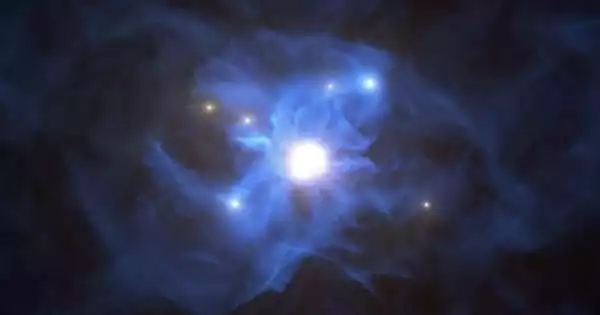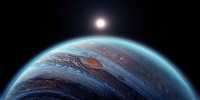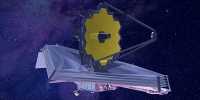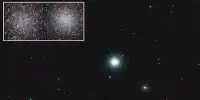Researchers discovered long, narrow dust filaments that surround and feed black holes in galaxies’ centers, and which could be the natural cause of the darkening of many galaxies’ centers when their nuclear black holes are active.
The black holes at the centers of galaxies are the most mysterious objects in the Universe, not only because of the massive amounts of matter contained within them, millions of times the mass of the Sun but also because of the incredibly dense concentration of matter in a volume no larger than our Solar System. When they capture matter from their surroundings, they become active and can emit enormous amounts of energy from the capture process, though it is difficult to detect the black hole during these rare capture episodes.
A study led by Almudena Prieto of the Instituto de Astrofisica de Canarias (IAC) discovered long narrow dust filaments that surround and feed these black holes in galaxies’ centers, and which could be the natural cause of the darkening of many galaxies’ centers when their nuclear black holes are active. The study’s findings were recently published in the journal Monthly Notices of the Royal Astronomical Society (MNRAS).
This group of telescopes has given us a completely new perspective of a supermassive black hole, thanks to high angular resolution imaging, because it allows us to follow the disappearance of the dust filaments as they fall into the black hole.
Almudena Prieto
The scientists were able to obtain direct visualization of the process of nuclear feeding of a black hole in the galaxy NGC 1566 by these filaments by using images from the Hubble Space Telescope, the Very Large Telescope (VLT) at the European Southern Observatory (ESO), and the Atacama Large Millimetre Array (ALMA) in Chile. The combined images show a snapshot of how the dust filaments separate and then travel directly to the galaxy’s center, where they circulate and rotate in a spiral around the black hole before being swallowed by it.
“This group of telescopes has given us a completely new perspective of a supermassive black hole, thanks to high angular resolution imaging and panoramic visualization of its surroundings because it allows us to follow the disappearance of the dust filaments as they fall into the black hole,” explains Almudena Prieto, the paper’s first author.
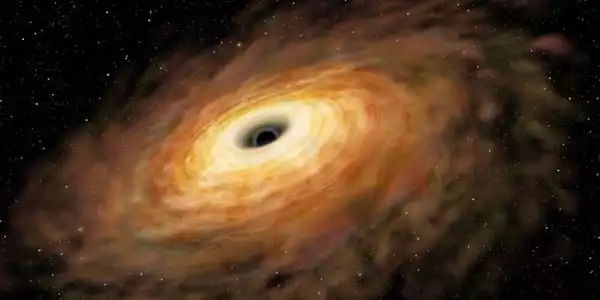
The research is the result of the IAC’s long-term PARSEC project, which aims to understand how supermassive black holes awaken from their long periods of hibernation and, through a process in which they accrete material from their surroundings, become the most powerful objects in the Universe.
What is the smallest size of a black hole? Astronomers have been trying to answer this question for decades by counting the number of black holes in our part of the universe. Over the years, they’ve discovered a plethora of large and medium-sized ones, as well as a supermassive monster at the center of our galaxy. However, until recently, they had seen no evidence of small ones, posing a long-standing mystery in astrophysics.
Astronomers have discovered a black hole that is only three times the mass of the sun, making it one of the smallest ever discovered—and it also happens to be the closest known black hole, at only 1,500 light-years from Earth.
According to Tharindu Jayasinghe, an astronomer at Ohio State University and lead author of a new paper detailing the discovery in the Monthly Notices of the Royal Astronomical Society, the discovery “implies that there are many more [small black holes] that we might find if we increased the volume of space that we searched.” “The discovery should create a push to find these systems,” according to the researchers.
The object has been dubbed the “unicorn” by Jayasinghe and his colleagues, in part because it is unique, and in part, because it was discovered in the constellation Monoceros, which was named by ancient astronomers after the Greek word for unicorn. Researchers hope to gain a better understanding of what happens to stars in their final moments by studying this unicorn and other objects like it, and why some collapse to become black holes while others leave dense stellar husks known as neutron stars.
